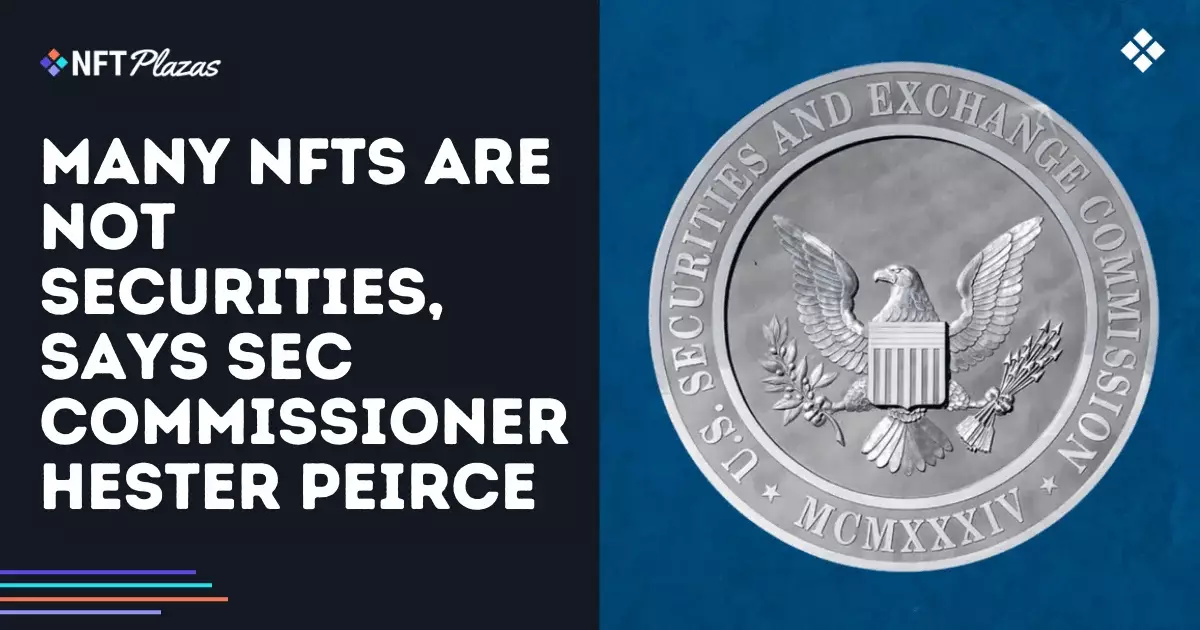In a recent address at the SEC Speaks 2025 event, Commissioner Hester Peirce made headlines by stating her belief that a significant portion of non-fungible tokens (NFTs) do not meet the criteria for securities as defined by U.S. law. This remark is a breath of fresh air in a landscape choked with uncertainty, where creators and investors alike grapple with the regulatory fog surrounding digital assets. Peirce’s assertion underscores a vital distinction: the true nature of NFTs and the importance of how they are marketed and sold. It’s about time that regulators acknowledge the digital spectrum’s limitless potential while also recognizing its pitfalls.
Enduring Ambiguity Breeds Distrust
However, the burning question remains: why does this regulatory ambiguity exist? The SEC’s heavy-handed focus on enforcement instead of forward-thinking guidance has left the NFT diaspora shrouded in anxiety. The lack of clarity is disheartening and stifles creativity; those venturing to innovate in the NFT space face significant risks over misguided compliance concerns. There is a prevailing fear that one misstep could lead to time-consuming lawsuits rather than constructive dialogue aimed at shaping a robust regulatory framework. Investors are left in the lurch, fumbling in the dark, unsure of whether their beloved NFTs are legitimate or potential legal liabilities.
The Urgency for a Safe Harbor
Peirce’s suggestion of a Safe Harbor framework to provide crypto projects with breathing space for development is a noteworthy plea—one that should be met with serious consideration. Imagine a sandbox where nascent technologies can flourish without the omnipresent threat of regulatory penalties hanging over their heads. This idea, which would allow projects to operate for a predefined period under simplified rules, could enable innovation to thrive while ensuring a baseline of investor protections. However, the framework has yet to gain traction, leaving many entrepreneurs in the blockchain sphere at the mercy of a capricious regulatory environment.
The Need for Proactive Legislation
The demand for clearer definitions regarding NFTs and their regulatory standing is not merely a financial concern but a matter of national competitiveness. While Peirce emphasizes that not all NFTs fall under the securities umbrella, the SEC has provided no formal road map. This lack of direction is not only detrimental to businesses; it poses a risk to the United States’ status as a global leader in technological innovation. The time has come for Congress to step in and create comprehensive legislation that delineates the unique nature of NFTs. Regulatory frameworks that are too stringent could send innovators packing to friendlier jurisdictions, stifling U.S. leadership in the digital economy.
Future Directions and Clarity Ahead
As Commissioner Peirce advocates for a more nuanced approach to regulation, her ideas reflect a growing recognition within the SEC of the need for balance—balancing innovation with necessary protections. While there is hope that future rulemaking will provide the clarity that the NFT market craves, it is imperative that policymakers engage with creators and stakeholders to craft sensible laws instead of reacting in haste post-factum. The NFT revolution is too vital to our creative and economic future to be hindered by a lack of direction. The next step rests in both the hands of regulators and the creative individuals pushing the boundaries of digital innovation.

